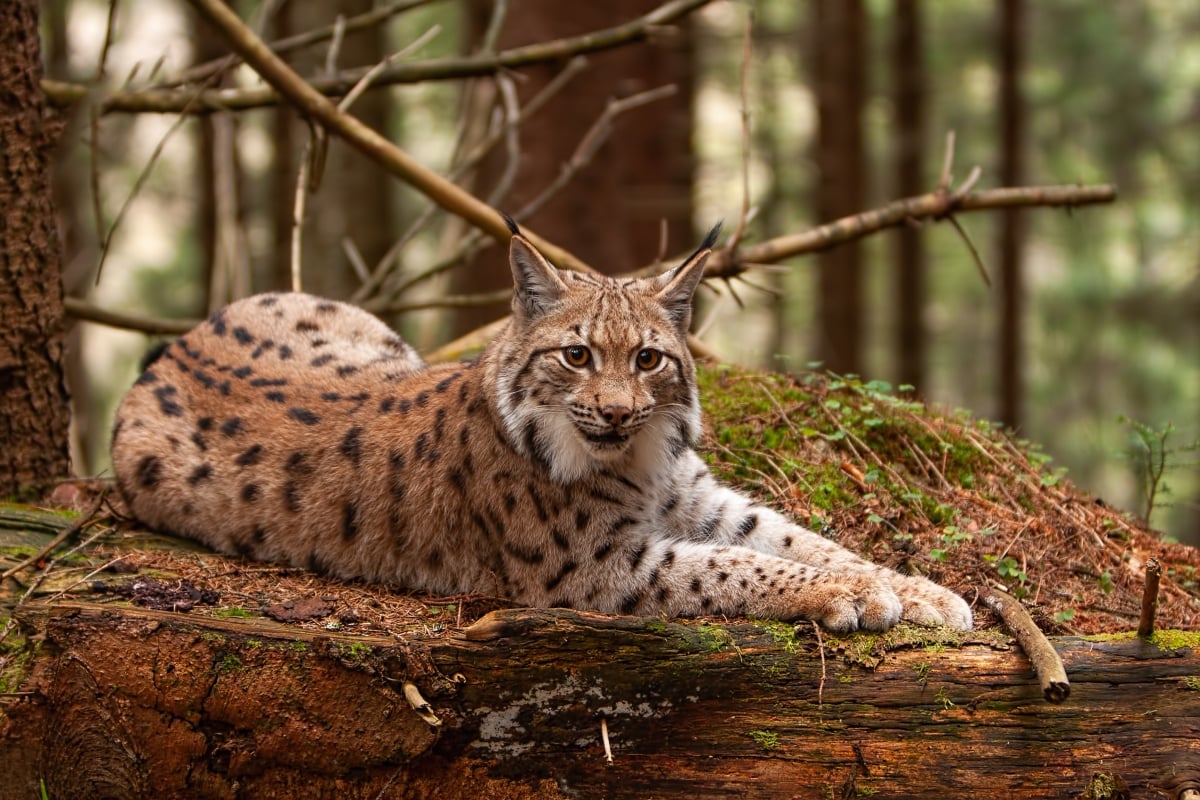Anesthesia, Sedation and Chemical Restraint of Wildlife

In wildlife medicine, it is often necessary to chemically restrain animals to perform even the most basic procedures. This is particularly true when working with large animals, particularly large carnivores. Therefore, it is important for veterinarians, wildlife researchers and their support personnel to be familiar with the variety of immobilizing agents and equipment used in this field, as well as to understand when to use each of them.
Because there is some overlap in the situations in which the various drugs and equipment may be used, personal preference and familiarity play a large role in determining which types of immobilization agents and equipment are used. Other factors involved in this decision include: facility design, the species involved, the attitude and behavioral characteristics of the animal, and the physiologic or pathologic condition of the animal.1
Considerations for choice of restraint methods include human safety, animal safety, environmental factors, knowledge, preference and the preparation/planning involved.
Physical Restraint of Wildlife
Excepting cases in which an individual animal has been injured or rescued, more often than not, wild animals must be captured prior to any procedures being performed. Unless the animal has been sedated via remote delivery, this includes sedation. Thus, it becomes necessary for most wild animals to be physically restrained prior to sedation, regardless of size.
Wild animals are far more susceptible to stress and injury than domestic species, particularly during capture, handling, restraint and transportation. Even straightforward procedures such as blood collection and clinical examination can be so distressing to a wild animal as to significantly jeopardize its health. In addition, many wildlife species are potentially dangerous to handlers, so human safety must also be taken into consideration.2
Consequently, the aim of every capture and restraint procedure must be to minimize the stress on the animal, and at the same time maximize the safety of the handler. This means planning ahead and taking account of a number of important factors:
Background. A thorough knowledge of the species to be handled, including its behavior, reaction to stress, ability to defend itself, and the appropriate physical and chemical restraint procedures is paramount to the success of the procedure and safety of all participants.
Consideration. Why does the animal needs to be handled? Precisely what is to be done to the animal? Is the procedure likely to be painful? How long will it take?
Equipment and facilities. All equipment and facilities should be checked and made ready before the animal is captured.
Restraint procedures to be employed. Is physical restraint sufficient, or will chemical restraint also be required? This will depend upon the answer to the first two points.
Timing. When is the best time to undertake the procedure? Early morning or late afternoon might be cooler and therefore better for the animal.
Recovery. Animals which have been anesthetized will need to have appropriate recovery time, as well as a quiet, dark environment in which to recover, free from disturbance but where they can still be monitored.2
Although physical restraint of native wildlife may be appropriate in some management and medical situations (and will be influenced by the animal's type, temperament, size and physical/pathologic condition), it does affect patients in various physiologic and psychological ways.1
To facilitate the physical restraint of nondomestic patients, therefore, one should have access to equipment such as protective gloves, towels, hoop nets, snares, plastic tubes, and ideally, a squeeze cage.1
Effective methods of physical restraint that minimize the possibility of physical injury and physiological and psychological stress should be chosen within the limits of human safety. The least amount of restraint and the shortest possible time necessary for the procedures being undertaken should be used. Personnel handling animals should be thoroughly trained in the planned procedures as well as in alternative methods of restraint that may be required.2
Chemical Restraint of Wildlife
Most wildlife, especially large (≥ 5 kg) or fractious individuals, or those requiring extensive procedures or surgical manipulation, require chemical restraint. In these cases, pre-immobilization planning is essential for successful chemical immobilization. This involves having trained personnel, appropriate equipment, an equipment checklist, a checklist to refer to during the procedure, emergency drug doses calculated, and a preanesthetic assessment of the patient. Human and animal safety issues must also be addressed prior to the chemical restraint of an animal.1
Premedication (sedation) of animals may have value in some cases, but may be unnecessary in others. Some medications (i.e., diazepam) can be administered PO prior to a procedure, often with beneficial results; results, though can be highly variable. To administer premedications parenterally, though, requires that an animal be handled or darted twice to achieve anesthesia. In some cases, this can result in an excited animal at the wrong time, negating any potential benefit from a sedative. Frequently, the anesthetic sparing effect of some sedatives can be retained by incorporating them with the anesthetic drugs (i.e., administering the drugs simultaneously).1 Following induction, maintenance of the animal using gaseous anesthetics is often indicated.
Once anesthetized, it is important to monitor cardiopulmonary functions (i.e., pulse oximeter, Doppler blood flow monitor, ECG, etc.) and temperature of the patient. Administering supportive care such as supplemental heat and fluid therapy to anesthetized patients may be required. Recovery of an anesthetized patient should occur in an undisturbed, quiet, dimly lit, secure area that is free from physical hazards. Animals are generally placed in lateral recumbency for recovery. Chemical reversal of the anesthetic agent is generally desirable, although postanesthetic monitoring can present a great deal of difficulty in the case of native carnivores.1
1Carpenter, J., DVM. Chemical restraint of native carnivores. Vet Clin N Am: Exotic Anim Pract 4:193-209, 2010.
2Tribe, A., Spielman, D. Restraint and Handling of Captive Wildlife. ANZCCART News, Vol 9 No 1 March 1996.


